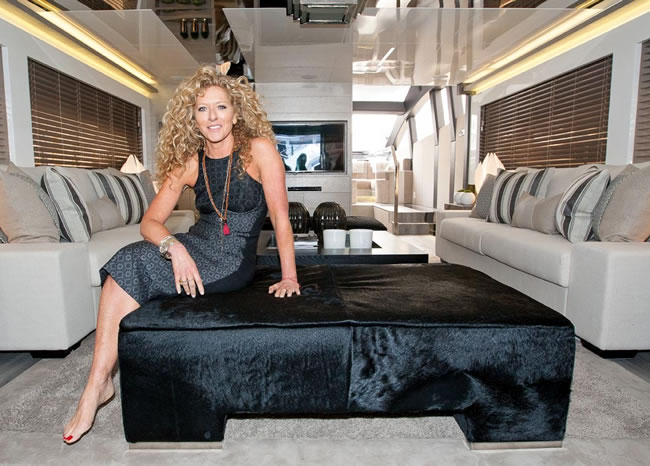 Interior designer for the rich and famous, Kelly Hoppen, hopes to inspire the masses by sharing her trade secrets in a new book, writes Peta Tomlinson.
Interior designer for the rich and famous, Kelly Hoppen, hopes to inspire the masses by sharing her trade secrets in a new book, writes Peta Tomlinson.
[contentblock id=1 img=adsense.png]Those aspiring to own a beautiful, Zen-like home may well fawn over the design genius of Britain’s “queen of calm”, Kelly Hoppen. However, it is unlikely that most people will be able to afford her. It’s reported that the celebrity designer, who counts the likes of Victoria and David Beckham as friends and clients, has not taken a job for less than £300,000 (HK$3.9 million).
 Yet for the price of her latest book – Design Masterclass: How to Achieve the Home of Your Dreams – Hoppen spells out step by step and room by room how to get the most out of your space. Follow her style tips, add your own personality and your home will flow, say daughter Natasha Corrett and step-daughters Sienna and Savannah Miller, in a heartfelt foreword.
Yet for the price of her latest book – Design Masterclass: How to Achieve the Home of Your Dreams – Hoppen spells out step by step and room by room how to get the most out of your space. Follow her style tips, add your own personality and your home will flow, say daughter Natasha Corrett and step-daughters Sienna and Savannah Miller, in a heartfelt foreword.
Now in her 50s the designer, who started Kelly Hoppen Interiors at 16, has never been busier. Apart from her many private and commercial projects globally, Hoppen is an ambassador for The Prince’s Trust, a television personality and this year began an online business, kellyhoppen.com.
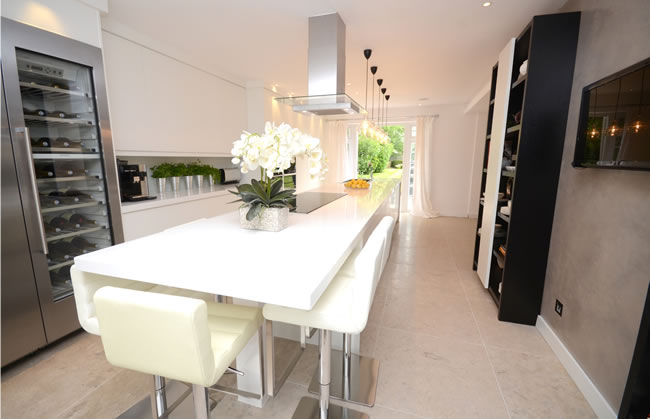 She is also a prolific writer. Design Masterclass is her eighth book on the subject and it’s a work Hoppen sees as her design legacy (“my way of putting down on paper everything that I carry in my head”). The priority when designing is to keep everyone happy by considering lifestyle. “There is no point in decorating what you consider to be the perfect home if it becomes a source of family discord,” she says.
She is also a prolific writer. Design Masterclass is her eighth book on the subject and it’s a work Hoppen sees as her design legacy (“my way of putting down on paper everything that I carry in my head”). The priority when designing is to keep everyone happy by considering lifestyle. “There is no point in decorating what you consider to be the perfect home if it becomes a source of family discord,” she says.
Although Hoppen is British, she gives the impression her spiritual home is Asia. “I love the whole East-meets-West aesthetic, and Hong Kong has this wonderful Eastern expression,” she says. “All my inspiration comes from the East – it totally fuels my soul.”
 Half of her work is now in the region, including projects in Hong Kong, the mainland, Taiwan and, more recently, India. But while she’s lent her look to the homes of high-profile clients in Hong Kong, Hoppen realises that her book’s portrayal of large, open-plan spaces that lend themselves to different zones, have abundant natural light and come with spectacular views is atypical for the majority. However, the theory, she says, is the same. It doesn’t matter if your space is small, dark or hemmed in, it’s what you do with it that counts.
Half of her work is now in the region, including projects in Hong Kong, the mainland, Taiwan and, more recently, India. But while she’s lent her look to the homes of high-profile clients in Hong Kong, Hoppen realises that her book’s portrayal of large, open-plan spaces that lend themselves to different zones, have abundant natural light and come with spectacular views is atypical for the majority. However, the theory, she says, is the same. It doesn’t matter if your space is small, dark or hemmed in, it’s what you do with it that counts.
“Fundamentally, a space only works if you live in it well,” she says. Hoppen recalls two show flats she decorated last year in Happy Valley. “They were really small apartments,” she says. “In situations like that, it’s about light, colours, texture, flow and the scale and proportion of furniture. We build a lot of yachts, so we know the tricks to use for small spaces.”
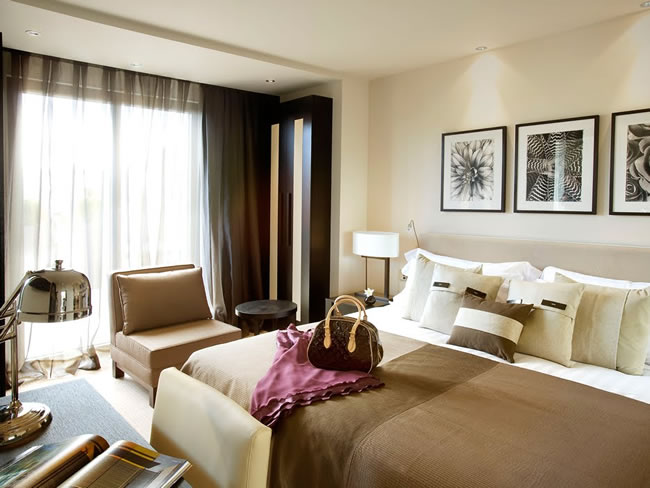 Based on her signature neutral palette, Hoppen’s solution for that project was a textural design which, although modern in appearance, “will evolve timelessly”. Black wooden floors were employed to elongate the space (one of several tips Hoppen reveals in her book to give the illusion of more room than you have) and black lacquer detailing, floating glass and architectural lighting added a touch of glamour. Textural soft furnishings brought “the sumptuous, nurturing feeling [that is] so important within a home”.
Based on her signature neutral palette, Hoppen’s solution for that project was a textural design which, although modern in appearance, “will evolve timelessly”. Black wooden floors were employed to elongate the space (one of several tips Hoppen reveals in her book to give the illusion of more room than you have) and black lacquer detailing, floating glass and architectural lighting added a touch of glamour. Textural soft furnishings brought “the sumptuous, nurturing feeling [that is] so important within a home”.
What to do with those awkward spaces – another section addressed in the book – also resonates. “Lighting is terribly important in an awkward space. Use the height of doors, the way you lay a wooden floor and a mixture of colours and textures – it’s an art form,” she says.
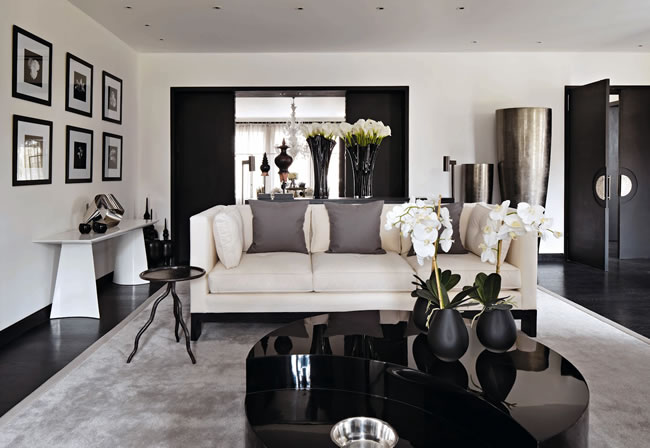 The introduction of a diversionary wow factor – a beautiful artwork or a statement piece of furniture – will also draw the eye away from the offending element. If you have a staircase, embrace it for its potential to be “an extraordinary piece of architectural sculpture”, she says. Ways to change the look include replacing the treads with wooden boards, wrapping the bannister in leather, improving the lighting (via a central chandelier and/or a concealed light on every few steps) or even just repainting or refreshing the carpet. There are “lots of inexpensive things that can make a huge difference”, she says.
The introduction of a diversionary wow factor – a beautiful artwork or a statement piece of furniture – will also draw the eye away from the offending element. If you have a staircase, embrace it for its potential to be “an extraordinary piece of architectural sculpture”, she says. Ways to change the look include replacing the treads with wooden boards, wrapping the bannister in leather, improving the lighting (via a central chandelier and/or a concealed light on every few steps) or even just repainting or refreshing the carpet. There are “lots of inexpensive things that can make a huge difference”, she says.
Given the importance Hoppen places on lighting, it’s no surprise that this is one of her first considerations in any interior scheme. Less predictable is that she chooses the flooring last, letting the textures and colours of furniture, soft furnishings and wall finishes dictate it. The other way around is like “shooting from the hip”, Hoppen says, and will likely lead to disappointment. “You can save yourself a lot of money by laying everything out on a board,” she says.
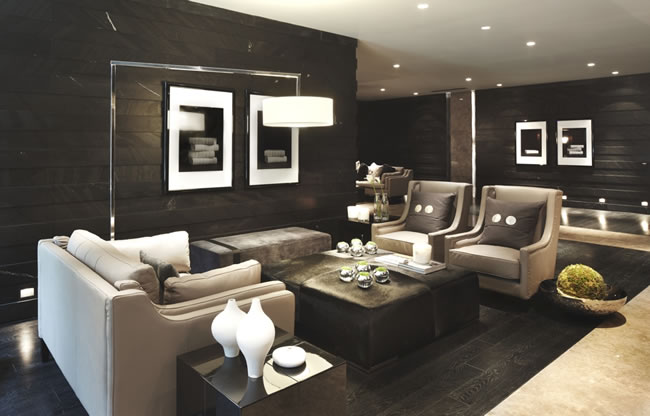 “I constantly do that, even now. Changing things as I change my mind; the visual impact becomes clearer.” The underlying factor in any Kelly Hoppen interior is fung shui. Hoppen recently had her London office realigned for Lunar New Year and brings local master Richard Ashworth in to balance her home about twice a year.
“I constantly do that, even now. Changing things as I change my mind; the visual impact becomes clearer.” The underlying factor in any Kelly Hoppen interior is fung shui. Hoppen recently had her London office realigned for Lunar New Year and brings local master Richard Ashworth in to balance her home about twice a year.
“I do believe in it, because it works,” she says. “A well-balanced energy helps people feel as though they have always lived in the space. It’s something I practise at home and continually strive for when designing for clients.” Much of the advice in the book can be applied to people renting homes. Even Hoppen herself is a tenant right now – she’s building “one of the most unique spaces I have ever owned” – but there are no telltale signs at her rented apartment. And nor should there be, she says.
[contentblock id=2 img=adsense.png]
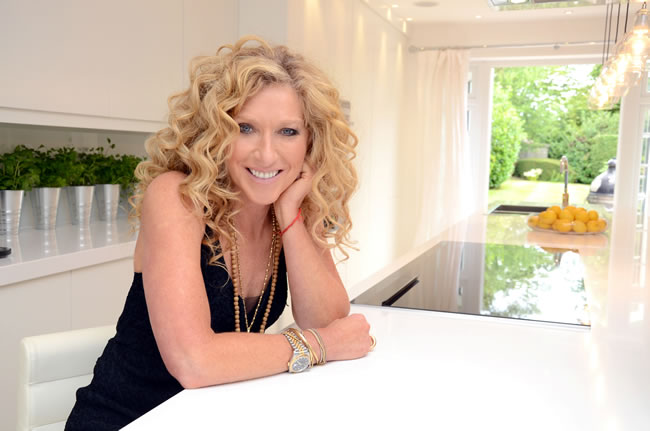 Just because you’re renting, doesn’t mean you can’t create something that’s beautiful. “If you’re going to be in a place for more than two years, I believe it needs to reflect your personality,” she says. Put rugs down, upgrade lighting, buy furniture you can take somewhere else and do everything in neutral colours, she advises.
Just because you’re renting, doesn’t mean you can’t create something that’s beautiful. “If you’re going to be in a place for more than two years, I believe it needs to reflect your personality,” she says. Put rugs down, upgrade lighting, buy furniture you can take somewhere else and do everything in neutral colours, she advises.
And there’s no need to put everything you own on display. “A home is not just about how it looks but about how you feel in the space.” It is partly with this demographic in mind that Hoppen launched her online store. Its affordable collections of cushions, linen, home jewellery and accessories are designed to make a rental feel homely. Her site also includes how-to videos and exclusive style tips.
“It’s something I’ve wanted to do for a long time,” Hoppen says of her e-commerce venture. “Everyone wants a lovely home. I want to take what I’ve learned from the couture world and deliver it to as many people as I can.”

